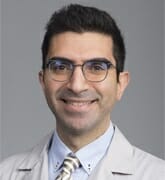
A small surgical study of recovered COVID-19 patients has found no lasting lung damage within three months of illness.
Participants underwent elective lung surgery for tumor removal, unrelated to COVID-19. They gave permission for surgeons to take samples of benign lung tissue around the tumor where there had also been COVID-19 infection. Tissue analysis showed that in 11 patients who were no longer symptomatic for COVID-19, telltale signs of lung damage were undetectable.
This is a far cry from the results of damage reported in autopsies of those who die of the disease, according to investigators. The lungs of end-stage COVID-19 patients instead show scarring, damage to the lung’s blood vessels, lingering viral particles and more abnormalities. In contrast, the current study indicates that COVID-19 survivors can recover without significant lasting lung damage, researcher Zaid Abdelsattar, M.D., said.
The study gave researchers a rare opportunity to study survivors of COVID-19, he said.
“Since the start of the pandemic, a big question has been whether COVID-19 will have long-term or permanent damage on our lungs,” explained Abdelsattar, a thoracic and cardiovascular surgeon at Loyola University Health System, Chicago. “Our study shows that if you contract COVID-19 and then completely recover clinically, on imaging, your lung tissues are also likely to have completely healed as well without permanent damage.”
But the question of why some patients recover fully and others don’t remains, he added. And other studies have shown that lung changes can linger up to a year later in recovered patients.
Most discharged hospital patients appear to return to full health after a bout with severe COVID-19 infection, one investigation published in May found, but up to a third show evidence of lung changes or related problems in that time period. Exercise programs may help patients better recover lung function, these researchers said.
Full findings in the current study were published in The Annals of Thoracic Surgery.



